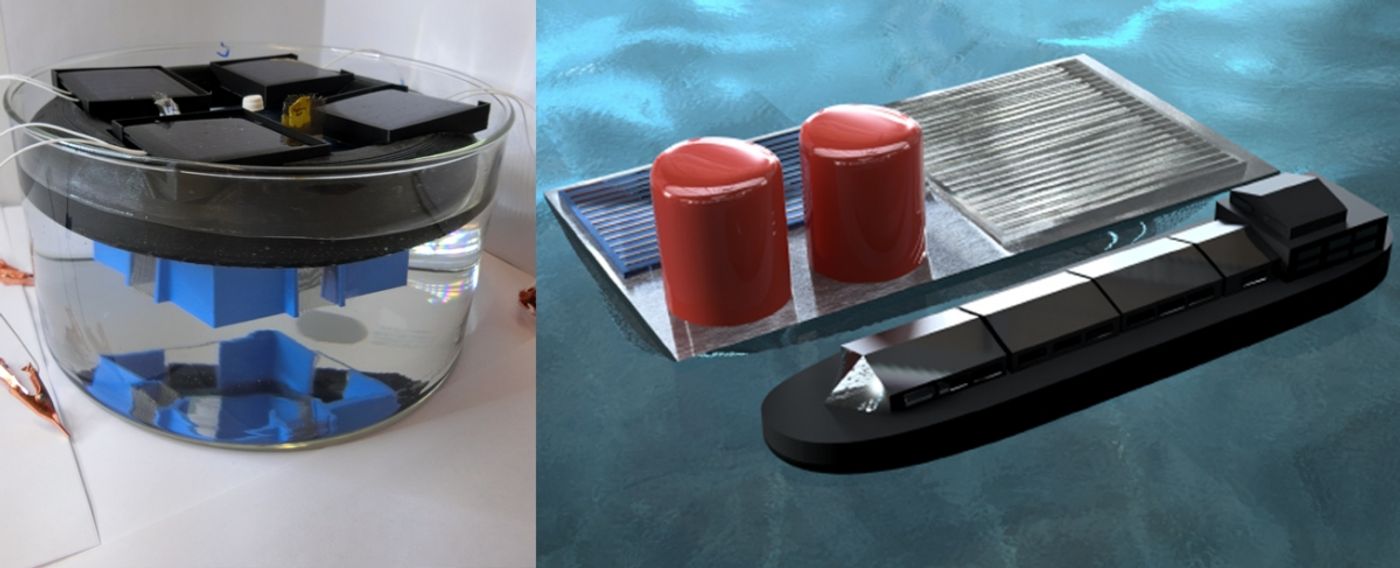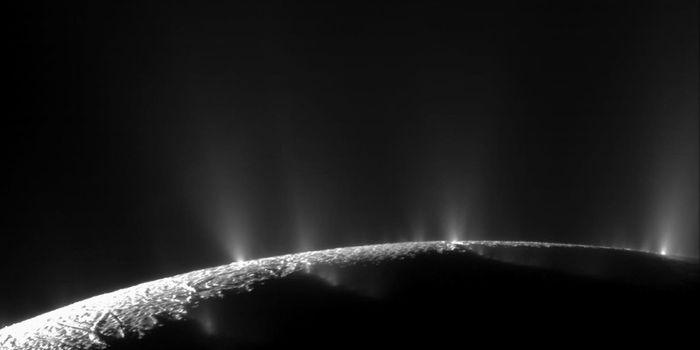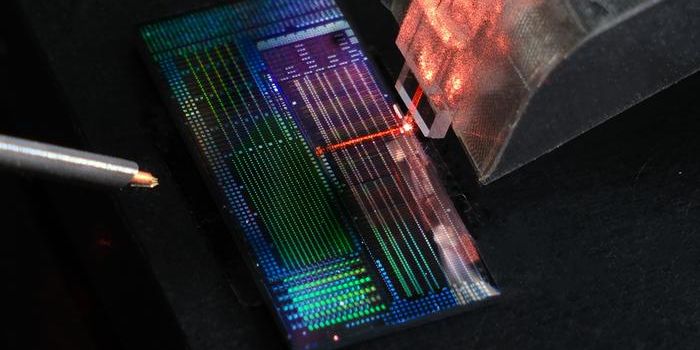This Futuristic Fuel Rig Produces Hydrogen Not Oil
The sun is often seen as an under-utilized source of energy. Solar energy is abundant, reliable and pollution free, but also costly to produce, hard to store and inconsistently available. An engineering team led by Columbia University professor Daniel Esposito has developed a novel solar-powered electrolysis device that can harvest hydrogen gas in the middle of oceans.
Solar energy can be stored as electricity in batteries or as heat in molten-salt, silicon, rock caverns, concrete, and pebbles. Storing solar photovoltaic (PV) electricity into different energy-harboring materials is a hot topic in the field of renewable energy.
Hydrogen is the fastest growing industrial gas. Its main application, though often associated with powering rockets and automobiles, are more than just fuel. It is the cooling gas for tens of thousands of power generators around the world, and it also plays an important role in semiconductor and electronic (like the screens you are staring at) manufacturing.
The vast majority of today's hydrogen is produced from fossil fuels through steam reforming or partial oxidation of methane and coal gasification. Only a small portion is produced by electrolysis of water, the splitting of water into oxygen and hydrogen. Therefore, even though hydrogen is a clean fuel on its own, but its production bears massive carbon footprints and is not a sustainable process.
The Columbia group has been exploring ways of converting electricity from solar photovoltaics into storable hydrogen fuel through water electrolysis, which is a promising route to produce complete hydrogen free of carbon dioxide emissions.
Their floating PV-electrolyzer design resembles an ocean oil rig in the sense that it produces energy in the middle of deep-sea. But the striking difference is that it would produce hydrogen fuel from sunlight and water, instead of extracting limited fossil fuel source from beneath the seafloor.
The appeal of their innovation is obvious: the vast open space no natural blockage of the sunlight except for the clouds, and the unlimited supply of source material sea water. However, their principal innovation lies in the mechanism behind the seawater electrolysis.
Currently, most electrolyzers conduct proton exchange membrane (PEM) electrolysis, a method that relies on expensive membranes to maintain separation of these two gases. PEM electrolyzers are equipped with a solid polymer electrolyte membrane that is responsible for the conduction of protons, separation of product gases, and electrical insulation of the electrodes. These membranes are prone to degradation and picky about the purity of water source. When placed in seawater, which contains impurities and microorganisms, this technology cannot survive for long.
The Columbia Engineering device relies instead on a novel electrode configuration that allows the gases to be separated and collected without any membrane or separators. It uses the buoyancy of bubbles in the water to harvest hydrogen fuel. Their design enables efficient operation with high product purity (as high as 99%) and without actively pumping the electrolyte.
The novel electrode configuration is made from mesh flow-through electrodes that are coated with a catalyst only on one side. These so-called asymmetric electrodes allow the emergence of hydrogen and oxygen gas on only the outer surfaces of the electrodes, where the catalysts have been deposited. As the gas bubbles grow bigger and bigger, the buoyancy removes bubbles from the electrode surfaces and float into separate collection chambers.
When interviewed about the solar PV powered hydrogen rigs, Esposito was delighted with the design: "The simplicity of our PV-electrolyzer architecture without a membrane or pumps makes our design particularly attractive for its application to seawater electrolysis, thanks to its potential for low cost and higher durability compared to current devices that contain membranes."
"We believe that our prototype is the first demonstration of a practical membraneless floating PV-electrolyzer system, and could inspire large-scale 'solar fuels rigs' that could generate large quantities of H2 fuel from abundant sunlight and seawater without taking up any space on land or competing with fresh water for agricultural uses,” he added.
Their study titled "Floating Membraneless PV-Electrolyzer Based on Buoyancy-Driven Product Separation" was published in International Journal of Hydrogen Energy.
After the success of their experiment prototype, the team is working on improving their design for higher efficiency and tackling challenges posed by in the real seawater environment. Larger, scaled-up systems are also in their plan.
Photovoltaic-powered Hydrogen Fuel Technology. Credit: Columbia Engineering
Source: Columbia University
Featured image source: youtube









